High Energy Workouts for a Head Start on Swimsuit Season
It's easier to work hard when you’ve got a game plan. Here are some options to help keep you moving until the last second of your workout!

Disease can be a hard topic to approach, but it’s definitely something worth talking about. You may find yourself asking the following questions:
We reached out to some experts on certain diseases to help better understand how these diseases impact the body’s ability to exercise and how to become stronger despite each disease.

What is ALS?
Amyotrophic lateral sclerosis, or ALS, is a disease of the nerve cells in the brain and spinal cord that control voluntary muscle movement. Most people with ALS live 2-5 years after their first signs of disease.
How does ALS affect the body?
The motor neurons die and block the communication between the brain and the muscles. As a result, the muscles shut down and atrophy. People with ALS lose the ability to talk, eat, swallow, walk, and ultimately breathe.
How does exercise benefit those battling this disease?
Studies have found that exercise can help ALS patients retain muscle strength and improve joint function. The goals are to maximize muscle function, slow down the deterioration of range of movement, and increase aerobic capacity and endurance for as long as possible. Stretching—both static and dynamic—once or twice a day can help ease muscle pain and slow the decrease in range of movement. (Source: https://alsnewstoday.com/2017/04/27/seven-tips-for-starting-exercise-with-als/)
A Special Message from Augie’s Quest
Every dollar raised through Augie’s Quest to Cure ALS is dedicated to driving the innovative science happening at the ALS Therapy Development Institute (ALS TDI). While we are laser focused on curing ALS, we hope our research leads to medical advancements for all neurodegenerative diseases.
All responses and photos above provided by a representative from Augie’s Quest.

Augie Nieto, Founder of Augie’s Quest

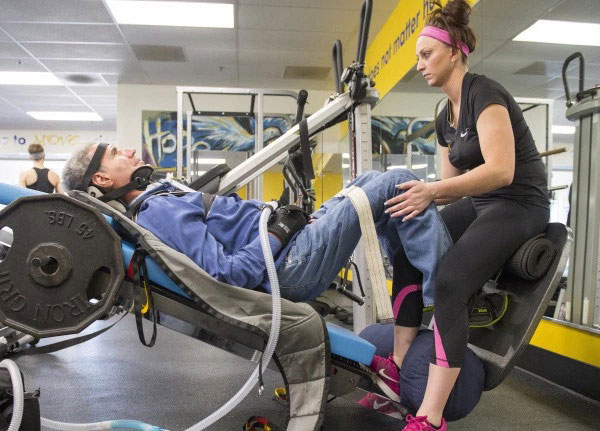

2016 Denver ALZ Walk
What is Alzheimer’s?
Alzheimer’s is a progressive and fatal disease that attacks the brain and causes problems with memory, thinking and behavior. Symptoms usually develop slowly and get worse over time, becoming severe enough to interfere with daily tasks and an individual’s independence. Alzheimer’s is the most common form of dementia and accounts for 60 to 80 percent of dementia cases.
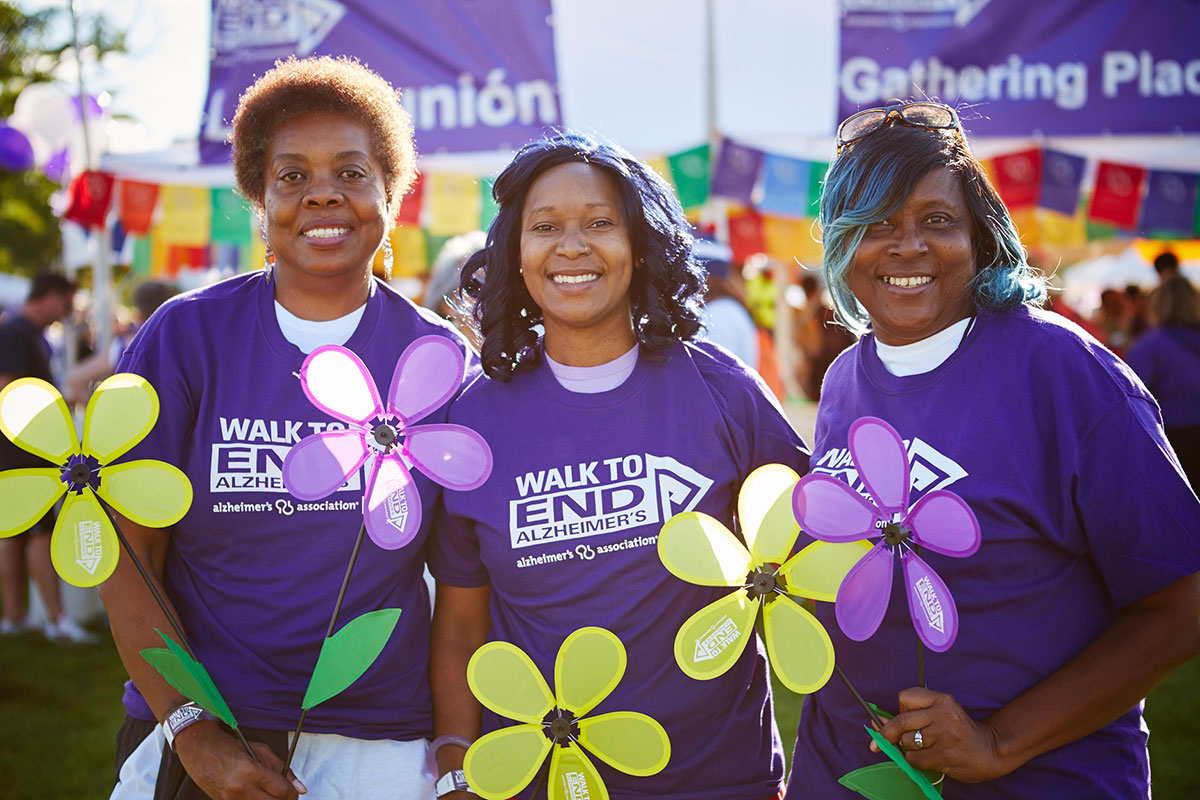
2016 Denver ALZ Walk
How does Alzheimer’s affect the body?
Alzheimer’s kills nerve cells and tissue in the brain, affecting an individual’s ability to remember, think, plan and ultimately function. As the disease advances, the brain shrinks dramatically due to cell death. Individuals lose their ability to communicate, recognize family and friends, and care for themselves. Ultimately, individuals forget how to swallow or breath; Alzheimer’s is fatal.
Early diagnosis of Alzheimer’s is extremely important as it allows better access to quality medical care and support services, and provides the opportunity for people with Alzheimer’s disease to participate in decisions about their care, including providing informed consent for current and future plans. Although Alzheimer’s has no current cure, treatments for symptoms, combined with the right services and support, can make life better for the 5 million Americans currently living with Alzheimer’s. You can learn about the 10 Warning Signs of Alzheimer’s at www.alz.org/10signs. If you suspect that you or someone you know may be experiencing these symptoms, consult with a doctor.

2016 Denver ALZ Walk
How does exercise benefit those battling this disease?
Growing evidence suggests that many factors that increase the risk of heart disease also may increase the risk of dementia. These factors include smoking, obesity, diabetes, high cholesterol and high blood pressure. The Alzheimer’s Association recommends exercise as one of the ways to help keep your brain and body healthy and prevent cognitive decline in the future. Engaging in regular cardiovascular exercise elevates your heart rate and increases blood flow to the brain and body. While there is currently no way to prevent Alzheimer’s, several studies have found an association between physical activity and reduced risk of cognitive decline. Other recommendations to keep your brain healthy as you age include eating a healthy and balanced diet, getting enough sleep, staying socially engaged, and challenging your brain with games and activities.

2016 Chicago ALZ Walk
A Special Message from the Alzheimer’s Association
Today, although Alzheimer’s cannot be prevented, cured or even slowed, we are making significant progress. The Alzheimer’s Association is confident that better treatments, earlier detection, and prevention strategies will be available in the foreseeable future. In the meantime, we know that there are steps that you can take to improve your overall health and lower your risk of cognitive decline in the future. Visit www.alz.org/10Ways to learn about things you can do now to potentially protect your brain in the future.
For those facing Alzheimer’s today, it’s important that they know that they are not alone. The Alzheimer’s Association has resources available to help support families and individuals facing this disease, including in-person care consultations, support groups, and a 24/7 Helpline (800.272.3900). Visit www.alz.org to learn more.
All responses and photos above provided by Dr. Heather Snyder, Senior Director, Medical & Scientific Relations for the Alzheimer’s Association.
What is cancer?
Cancer is an abnormal growth in a tissue of the body caused by mutations in DNA, exposure to toxins (including alcohol and smoking and radiation), certain infections (like hepatitis B or C, HPV human papilloma virus or helicobacter pylorus in the stomach), sun exposure, and genetic factors. The abnormal tissue continues to grow and invade the organ where it started (like breast or lung or colon) and also can spread by blood or lymph channels to other organs.
How does cancer affect the body?
Cancer affects the body by reducing the function of the organ in which it started (like shortness of breath with lung cancer), and by causing symptoms like bleeding, pain, fatigue, a growing lump or mass, or a sore that does not heal.
How does exercise benefit those battling this disease?
Exercise has remarkable effects on preventing and treating cancer. Importantly, exercise can reduce your chances of having many types of cancer, including breast, uterus, colon, rectal, esophageal, liver, stomach, kidney, head and neck, lung, bladder, and prostate cancers and also leukemia and myeloma. If a person has been diagnosed with cancer, exercise has been shown to increase survival and cure rates in patients with breast, colon rectal and prostate cancer. But even if a person has a different type of cancer, exercise is helpful to improve weight, reduce fatigue, control pain, lessen anxiety, reduce inflammation, and improve emotional stability. If a patient has lost strength due to the cancer or treatment with surgery, radiation, hormonal therapy or chemotherapy, exercise is important in rehabilitation to regain a normal lifestyle.
A Special Message from Cary Presant, MD (Physician, City of Hope Medical Group)
Remain active, get all types of exercise (aerobic walking or running or cycling, and anaerobic sprinting or weight training), and commit to a healthy diet and avoidance of bad health habits. Being sedentary is a health risk and getting exercise can save your life.
All responses above provided by Cary Presant, MD, Physician, City of Hope Medical Group.
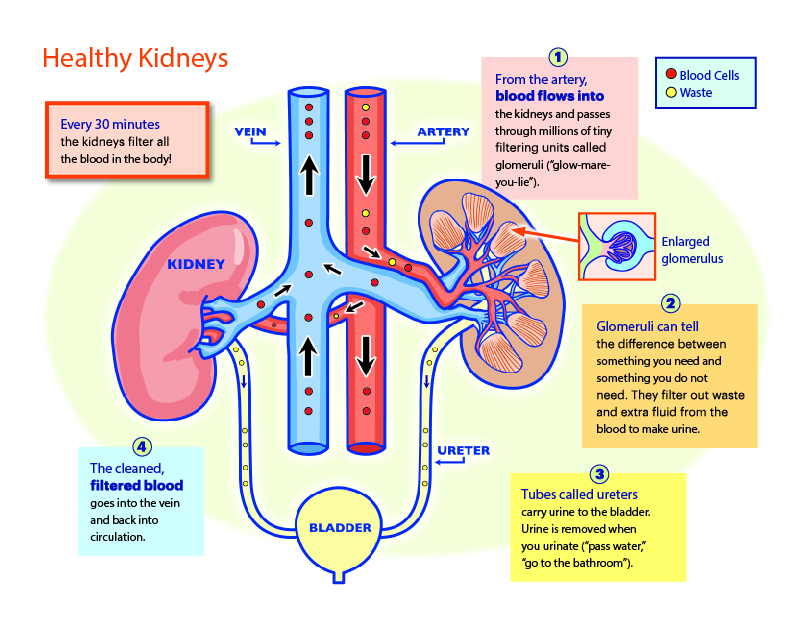
What is Chronic Kidney Disease?
Chronic kidney disease (CKD) means your kidneys are damaged and losing their ability to keep you healthy. In the early stages, most people do not have symptoms. The disease affects 30 million people in the U.S. (15% of the adult population) and approximately 90% of those with kidney disease don’t even know they have it. (For people at the earliest stages of kidney disease, 96% don’t know.) 1 in 3 Americans is at risk for CKD. Because of increasing rates of diabetes and high blood pressure, chronic kidney disease is on the rise and is an urgent issue.
How does CKD affect the body?
As kidney disease progresses, waste can build up in your blood and make you feel sick. You may develop other problems like high blood pressure, anemia, weak bones, poor nutritional health, and nerve damage. Kidney disease also increases your risk of having heart and blood vessel disease. These problems may happen slowly and can lead to kidney failure. Once kidneys fail, dialysis or a kidney transplant is needed to stay alive.
How does exercise and proper nutrition benefit those battling this disease/susceptible to this disease?
A few of the manageable, and sometimes preventable, risk factors of CKD include diabetes and high blood pressure. To prevent these health issues, or at the very least manage them so they don’t progress into something worse, it is best to maintain a healthy diet and exercise routine. Proper nutrition, incorporated with a healthy lifestyle, can help give your body a better chance at functioning properly, therefore diminishing your risk for developing CKD.
A Special Message from the National Kidney Foundation
Have you ever thought about donating an organ? Organ and tissue donation helps others by giving them a second chance at life. Learn more about the donation process–and how to become an organ donor. Visit https://www.kidney.org/transplantation for more information on how you could help save a life. Listen to some awe-inspiring testimonials from living donors here.
All responses above sourced from The National Kidney Foundation, with permission from Nichell Taylor Bryant, Senior Media Relations Manager. Kidney graphic provided by the Nation Kidney Foundation, Marketing & Communications.
What is COPD?
COPD stands for Chronic Obstructive Pulmonary Disease. Chronic means that the disease itself does not go away. It is always there, but, it is treatable and can be managed effectively. Obstructive means that you have trouble getting your air out of your lungs. Pulmonary means it affects the lungs.
COPD is an umbrella term used to describe progressive lung diseases including emphysema, chronic bronchitis and refractory (non-reversible) asthma. This disease is characterized by increasing breathlessness.
How does COPD affect the body?
As we mentioned, obstructive means you have trouble getting air out of your lungs. Why is this? With COPD the lungs have been damaged. This tends to make them stretched out and over-inflated, and lose
some of their elastic quality. We all know that a new balloon quickly goes back to its small size when you let the air out of it. But a balloon that’s been blown up many times is not as elastic as it once was, and it’s not as good at getting the air out. Lungs with COPD can be that way too, and if you can’t blow out the air you should, it’s harder to take your next breath.
So, when you are short of breath, of course, you’re going to want to sit down more and not be as active as you once were. Moving around less can make your muscles weak and your joints stiff. If it hurts to move around, you’re going to be even less active. The more sedentary you are, the less you can do, and the more frustration and anxiety you might have. Your breathing becomes more shallow (you are working very hard to huff and puff without moving much air) and this can be exhausting — and depressing.
Also, the heart and lungs work closely together to make sure enough oxygen gets around to all parts of our bodies. When the lungs are working too hard, more stress is put on the heart. So, COPD can affect not only the lungs but other body systems, your muscles, your brain… other parts of your body can begin to struggle to keep up with what they need to do.
How does exercise benefit those battling this disease?
You might think that if a person is this short of breath, there is no way they can exercise. But they can exercise, and it helps them have more endurance, strength and flexibility. For many people with COPD, exercising is a very scary thing. Pulmonary Rehabilitation is a good way to start. Pulmonary Rehabilitation professionals are very good at helping people with severe shortness of breath improve their level of fitness. They can help people with mild, moderate or severe COPD be able to feel better, breathe easier and be more active. And when you can do more, you may feel less depressed and anxious. You are more likely to have a fuller, more enjoyable life. Exercising and learning how to take the best possible care of your lungs can make an enormous difference in the life of a person with COPD!

Jane Martin, Assistant Director of Education for the COPD Foundation.
A Special Message from the COPD Foundation
You are not alone! There are 30 million Americans who have COPD and help is available! You can become informed and empowered, so you can have the confidence to control your breathing and cope with the changes that often come with having COPD. Visit COPD 360social, our vibrant online community to learn from others with COPD. https://www.copdfoundation.org/COPD360social/Community/Activity-Feed.aspx
For more about COPD, go to: http://www.copdfoundation.org
All responses above provided by Jane Martin, Assistant Director of Education for the COPD Foundation.
What is depression?
Depression is a serious medical illness that affects the brain and the body. People often think depression is just being sad all the time. In fact, people with depression do not necessarily feel sad – they feel numb and hopeless. Symptoms include inability to concentrate, loss of pleasure in things that used to be fun, difficulty sleeping or sleeping too much, loss of appetite, feelings of intense rejection or guilt, and suicidal thoughts.
How does depression affect the body?
Depression is a full-body illness. We know that several neurotransmitter systems in our brains are impacted by depression. These neurotransmitters influence different circuits and feedback loops that control every aspect of our lives, from appetite to motivation, to mood and feeling excited or peaceful. Our gut is affected. Our hearts and our muscles. Aches and pains are magnified.
How does exercise benefit those battling this disease?
Just 15 minutes of exercise changes the electrical activity in your brain’s mood centers. Regular exercise makes your brain stronger and more resilient to stress by increasing nerve growth factors.
A Special Message from The Hope For Depression Research Foundation
Remarkable advances in neuroscience teach us not just about mental illness but about mental wellness. Positive life changes can lead to positive brain changes that enhance our emotional well-being. Regular exercise, good sleep habits, and practicing gratitude are just three simple ways to keep our brains healthy and resilient. Gratitude is scientifically proven to reduce anxiety, improve sleep, and increase the brain’s production of serotonin – an important neurotransmitter. Regardless of your life’s circumstances, the gratitude circuit in your brain can be strengthened. Make gratitude a daily part of your routine by taking a few minutes each day to write down three things you are grateful for.
All responses above provided by Louisa Benton, Executive Director for the Hope for Depression Research Foundation.
What is diabetes & how does it affect the body?
As defined by the CDC,
Diabetes is a condition in which the body does not properly process food for use as energy. Most of the food we eat is turned into glucose, or sugar, for our bodies to use for energy. The pancreas, an organ that lies near the stomach, makes a hormone called insulin to help glucose get into the cells of our bodies. When you have diabetes, your body either doesn’t make enough insulin or can’t use its own insulin as well as it should. This causes sugars to build up in your blood. (Source: https://www.cdc.gov/media/presskits/aahd/diabetes.pdf)
How does exercise benefit those battling this disease/susceptible to this disease?
Regular physical activity is important for everyone, but it is especially important for people with diabetes and those at risk for diabetes. When you are active, your cells become more sensitive to insulin so it can work more efficiently. Your cells also remove glucose from the blood using a mechanism totally separate from insulin during exercise. So, exercising consistently can lower blood glucose and improve your A1C*. When you lower your A1C, you may be able to take fewer diabetes pills or less insulin.
Studies indicate that moving more throughout the day—in addition to getting the recommended 30 minutes a day, 5 days a week of moderate activity—may prevent or delay type 2 diabetes. It also is shown to improve blood glucose control, reduce cardiovascular risk factors, contribute to weight loss and improve wellbeing in people with type 2 diabetes. Regular exercise also has considerable health benefits for people with type 1 diabetes, including improved cardiovascular fitness, muscle strength and insulin sensitivity.
The American Diabetes Association recommends breaking up sitting time with three or more minutes of light physical activity—such as walking, leg extensions or overhead arm stretches—every 30 minutes. This is a new recommendation as of October, 2016. Previously, we recommended movement every 90 minutes.
Read more about how food and fitness affect health, by clicking the following link: http://www.diabetes.org/food-and-fitness/fitness/
*A1C, as defined by Merriam-Webster, is a stable glycoprotein formed when glucose binds to hemoglobin A in the blood.
A Special Message from the American Diabetes Association
The good news is diabetes can be managed with the proper care of a health professional, diet and exercise. For more information on diabetes, check out the ADA’s Diabetes Forecast magazine, full of information to help better understand how to manage this disease.
Below are some suggestions for incorporating more movement during the workday.
All responses above sourced from The American Diabetes Association, with permission from Courtney Cochran, Senior Manager of Media Relations.

What is heart disease?
Heart disease is the leading cause of death globally. It claims more lives each year than all forms of cancer and Chronic Lower Respiratory Disease combined.
Heart disease is a common term for the buildup of plaque in the heart’s arteries that could lead to heart attack.
Your heart muscle needs oxygen to survive. A heart attack occurs when the blood flow that brings oxygen to the heart muscle is severely reduced or cut off completely. This happens because coronary arteries that supply the heart muscle with blood flow can slowly become narrow from a buildup of fat, cholesterol and other substances that together are called plaque. When a plaque in a heart artery breaks, a blood clot forms around the plaque. This blood clot can block the blood flow through the heart muscle. When damage or death of part of the heart muscle occurs, it is called heart attack. About every 40 seconds, someone in the United States has a heart attack.
How does heart disease affect the body?
After a first heart attack, most people go on to live a long, productive life. However, around 20 percent of patients age 45 and older will have another heart attack within five years of their first.

How does exercise benefit those battling this disease/susceptible to this disease?
Exercise is essential to living heart-healthy. “Our bodies were designed to be physically active, and they don’t do well with long-term exposure to sedentary living. Lack of physical activity is a major risk factor for cardiovascular disease,” says Russell Pate, Ph.D., professor in the Department of Exercise at the University of South Carolina.
According to the American Heart Association’s exercise standards, “Exercise can be viewed as a preventative medical treatment, ‘like a pill’ that should be taken on an almost daily basis.”
The heart-healthy benefits of exercising for just 30 minutes a day are nearly endless. To name a few, exercise:
After a heart attack, be sure to talk to your doctor first before starting an exercise routine. Considering your medical history, age and other factors, your doctor can help determine what activities are best for your current physical condition.
We suggest starting a walking program, which is the easiest way to begin exercising and has the lowest dropout rate of any type of exercise. In addition, studies show that for every hour of walking, life expectancy may increase by two hours.
A Special Message from The American Heart Association
Don’t wait to get help if you experience any of these heart attack warning signs. Although some heart attacks are sudden and intense, most start slowly, with mild pain or discomfort. Pay attention to your body — and call 911 if you feel:
Emergency Medical Services (EMS) staff are trained to revive someone whose heart has stopped. Patients with chest pain who arrive by ambulance usually receive faster treatment at the hospital. It is best to call EMS for rapid transport to the emergency room.
Most people survive their first heart attack and return to their normal lives to enjoy many more years of productive activity. But living with heart disease does mean you need to make some changes in your life that include regular physical activity. For more information, resources and support about heart disease, visit www.heart.org.
All responses above provided by a representative from The American Heart Association.

What constitutes a stroke?
Stroke is a disease that affects the arteries leading to, and within, the brain. It is the No. 5 cause of death and a leading cause of disability in the United States.
A stroke is sometimes described as a brain attack, as a stroke occurs when a blood vessel that carries oxygen and nutrients to the brain is either blocked by a clot or bursts/ruptures. When there’s a blockage, part of the brain cannot get the blood and oxygen it needs, and many brain cells die. During a stroke emergency, “time loss is brain loss.”
There are different types of strokes:
How does having a stroke affect the body?
The brain is an extremely complex organ that controls various body functions. If a stroke occurs and blood flow can’t reach the region that controls a specific body function, that part of the body won’t work as it should.
Stroke is a leading cause of long-term disability and the leading preventable cause of disability. The effects of a stroke depend primarily on the location of the obstruction and the extent of brain tissue affected.
If the stroke occurs in the brain’s right side, the left side of the body (and the left side of the face) will be affected, producing some or all the following:
If the stroke occurs in the left side of the brain, the right side of the body will be affected, producing some or all the following:

How does exercise benefit those who have suffered from a stroke?
For the first three months after a stroke, the brain is much like a child’s brain, ready to learn, ready to make new connections. This ability for our brains to adjust is known as neuroplasticity, and it plays a crucial role in recovery.
“Stroke is more than ever preventable, treatable and beatable. Through awareness, education and tools, stroke survivors can feel highly confident in taking control of their health to significantly reduce their risk of experiencing another stroke,” said Dr. Joseph Hanna, Chairman of Neurology at The MetroHealth System, Inc., in Cleveland and Spokesperson for the American Stroke Association.
Regular exercise can help stroke survivors regain skills and abilities that can help them become more independent and improve their quality of life. After a stroke, it is important to follow your doctor’s guidance before starting any fitness plan.
A Special Message from The American Stroke Association
Fortunately, 80% of strokes can be prevented! Regular exercise is a crucial component of preventing common risk factors of stroke such as obesity, high blood pressure and diabetes. Follow the American Heart Association’s Life’s Simple 7 to prevent strokes and live a longer, healthier lifestyle:
Recognizing the warning signs of a stroke and taking immediate action can make a big difference in a stroke patient’s recovery outcome. The American Stroke Association teaches the warning signs of a stroke using the acronym, F.A.S.T., to help people recognize the symptoms and know what to do.
F.A.S.T. stands for:
For more information and resources to prevent, beat and treat stroke, visit www.StrokeAssocation.org.
All responses above provided by a representative from The American Stroke Association.
This article should not replace any exercise program or restrictions, any dietary supplements or restrictions, or any other medical recommendations from your primary care physician. Before starting any exercise program or diet, make sure it is approved by your doctor.
This article contains links to websites owned and operated by third parties. If you use these links, you leave our website. These links are provided for your information and convenience only. We do not endorse any content available through these links.
It's easier to work hard when you’ve got a game plan. Here are some options to help keep you moving until the last second of your workout!
Does liberally salting your food help you pump more iron in the gym? Registered Dietitian, Debbie James, investigates the claims!
It’s Multiple Sclerosis Awareness Month! Here is what you need to know about exercise safety with MS.

Shortly after John S. lost his wife of 53 years, he joined LA Fitness’ Silver Sneakers program in an effort to occupy his time. Unfortunately, more bad news still lay ahead. John was soon diagnosed with prostate cancer, causing him to spend two months in the hospital and another month in a rehab center. He was unable to lift or open a 16-ounce bottle of water. He was also unable to lift himself off the toilet seat and back into his wheelchair. It was a life-changing experience that this 80-year-old veteran and bible teacher never saw coming. Still, he persevered.
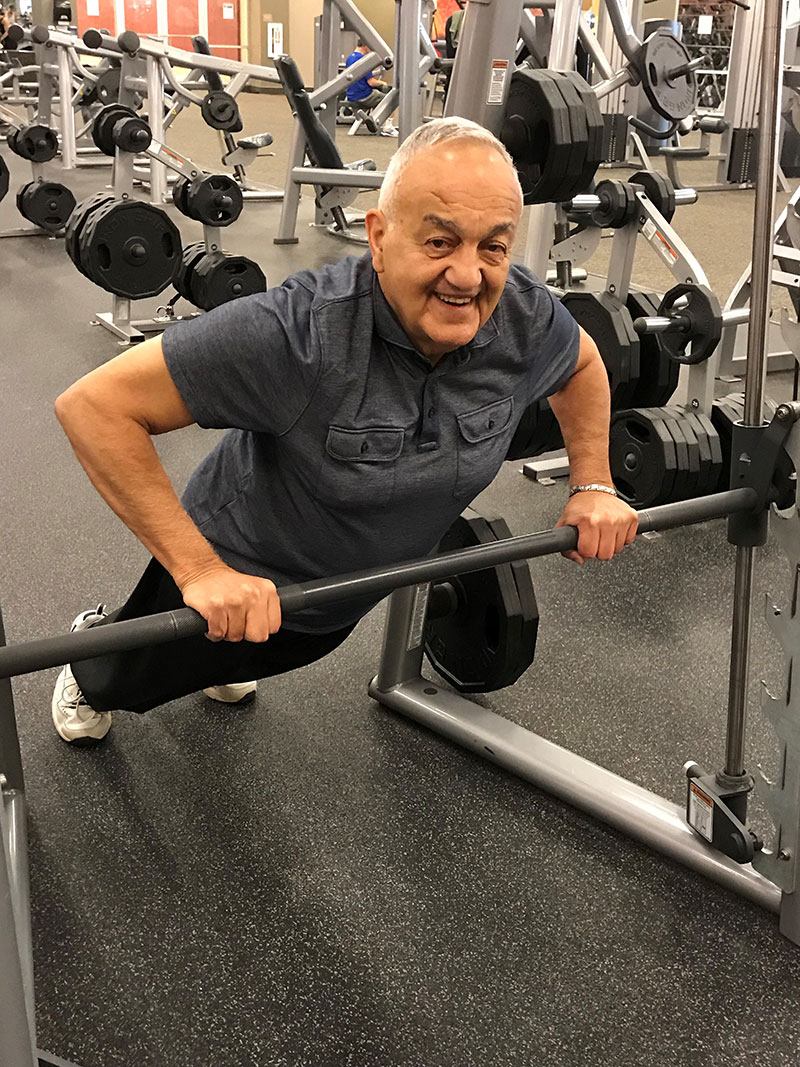

John S. with trainer Jenna N.
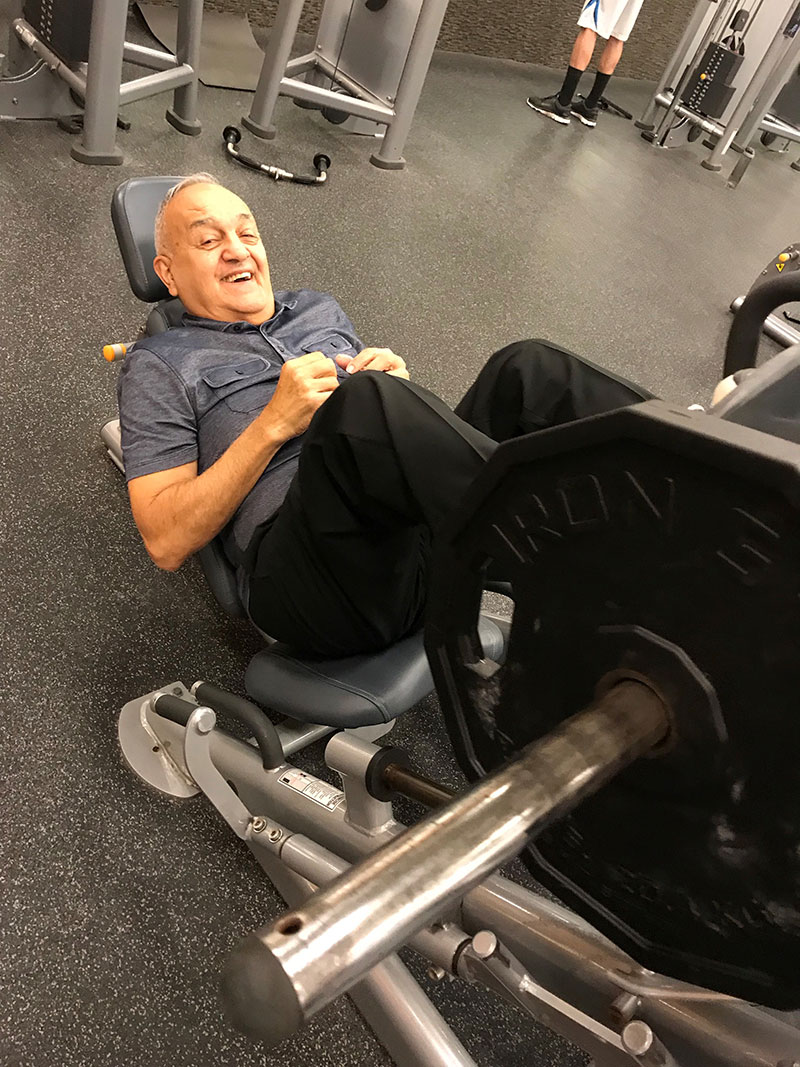
“To Jenna N. and LA Fitness, you have not only changed my life, but probably have saved it. With great sincerity and appreciation, I say ‘Thank You’.”
John S. during his hospital stay.
When John was discharged from the rehab center, his wheelchair went with him. Over the course of the next year, John was required to wear a catheter and take a large number of prescription drugs. Slowly but surely, he went from a wheelchair, to a walker, and then to lifting weights. Once John was able to move around again (without the assistance of a wheelchair or walker), he began training at LA Fitness with Master Trainer, Jenna N. John shared, “Anyone can be inspired to exercise when your trainer is a 26-mile marathon runner.” Jenna was well-educated on which exercises would help improve John’s balance and coordination since he had previously been used to the assistance of either a wheelchair or walker.
Over time, John began getting stronger. In his words, “I went from prescription drugs to aspirin and black coffee, and no longer need a catheter. I am grateful for [my local] LA Fitness and their training program.” From having gone from three months bed confinement, with guests having to wear face masks when visiting him, John has come a long way to where is he today. When asked how having a trainer helped improve his overall health and fitness levels, John shared the following:
You may ask, ‘To work with a trainer, is it expensive?’, and I would ask you, ‘Being healthy or being sick?’ You do not know what I went through for those three months of bed confinement and prescription drugs. I understand that the medical team was doing the best they [could] having me as a patient. For days, my visitors had to wear a mask to visit me. Normal PSA (protein serum antigen) levels for a man are between 1 and 4. My PSA level was 234. Only an act of God could have kept me alive […] perhaps to write this testimony.
If you feel lost when it comes to where to begin your fitness journey, investing in a personal trainer may be the best place for you to start. LA Fitness offers a complimentary fitness assessment* with every membership. Every story has a beginning… what’s yours? Start writing it today at LA Fitness.
Want more? SUBSCRIBE to receive the latest Living Healthy articles right in your inbox!
This article should not replace any exercise program or restrictions, any dietary supplements or restrictions, or any other medical recommendations from your primary care physician. Before starting any exercise program or diet, make sure it is approved by your doctor.
*Prior to fitness assessment, guest must show valid I.D. (must be 18 years of age or older) and complete a fitness analysis form. Scheduling of fitness assessment is subject to availability – it is recommended to call ahead and schedule an appointment. Limit one complimentary fitness assessment per person. Membership and/or personal training options may be presented.
It's easier to work hard when you’ve got a game plan. Here are some options to help keep you moving until the last second of your workout!
Does liberally salting your food help you pump more iron in the gym? Registered Dietitian, Debbie James, investigates the claims!
It’s Multiple Sclerosis Awareness Month! Here is what you need to know about exercise safety with MS.
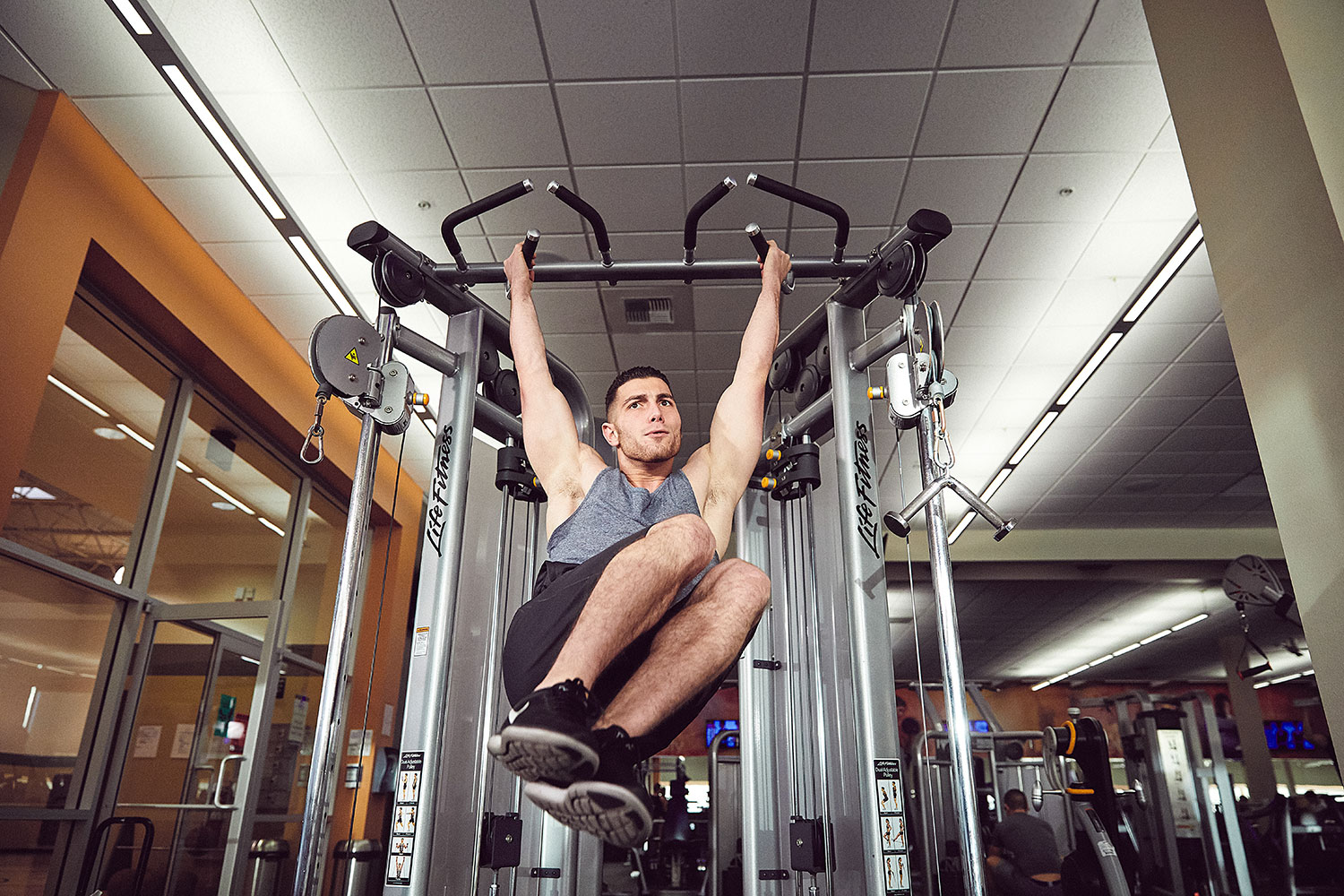
Belly fat – we hate it! But, how do we get rid of it? The answer isn’t as simple as a miracle pill or doing 50 crunches a day, rather, it’s a combination of things. LA Fitness Pro Results® trainer, Kayla V. explains further.
**Selected submissions will be featured on the LA Fitness blog and possibly other LA Fitness digital media entities & websites. By making a submission, you hereby grant LA Fitness a non-exclusive, perpetual, worldwide, irrevocable license to use and make copies of the contents of such submission for any purpose and in any medium whatsoever, and you hereby waive and relinquish any copyright or other intellectual property right you may have in the contents of such submission and your right to pursue any claim for LA Fitness’s violation of those intellectual property rights.
It's easier to work hard when you’ve got a game plan. Here are some options to help keep you moving until the last second of your workout!
Does liberally salting your food help you pump more iron in the gym? Registered Dietitian, Debbie James, investigates the claims!
It’s Multiple Sclerosis Awareness Month! Here is what you need to know about exercise safety with MS.
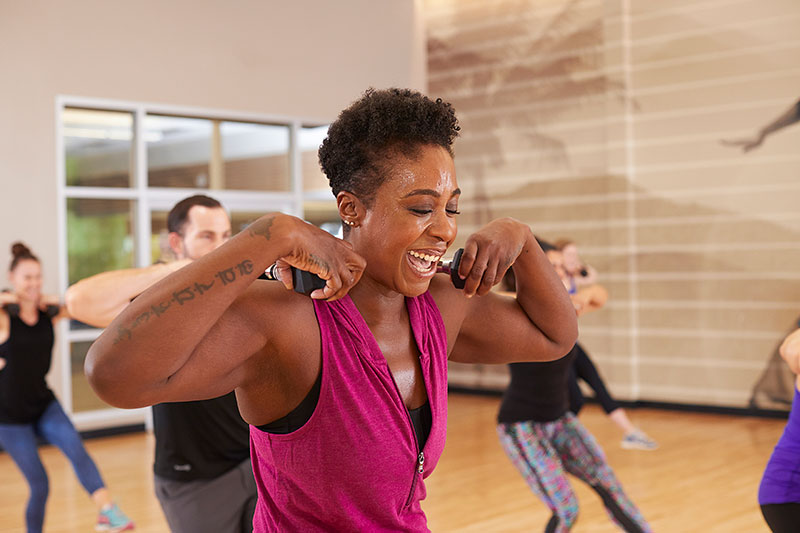

One of the great thing things about taking a Group Fitness class at LA Fitness is that all of the equipment is provided for you. You don’t have to worry about bringing your own weights or exercise equipment – all you have to focus on is showing up and giving it your best for (approximately) 55 minutes. It’s all about focusing on your own body. Group Fitness is a great way to push yourself with the helpful instruction of our certified instructors. Plus, you’re surrounded by other motivated individuals who are just as excited to focus on their health and fitness.
If you’re new to Group Fitness, don’t be intimidated! Everyone was new at some point. Group Fitness instructors will help teach you proper form and technique. Group Fitness is a great way to get fit with friends and family members while in an instructed, regimented environment. For those new to the gym, as well as those looking to switch up their typical exercise routine, Group Fitness classes are a great place to start.
A popular LA Fitness class is Body Works Plus Abs – after all, who doesn’t want a more toned core? In this class, members can expect a lightweight dumbbell workout moving to the beat of the music. You’ll be burning calories as you flow through a variety of exercises to help sculpt and tone your body into shape! With continued attendance, members may notice improvements in muscle tone, posture, balance and strength. It’s a full-body workout that provides full-body results.
In order to get a deeper understanding of what to expect from a Body Works Plus Abs class, we interviewed LA Fitness Group Fitness instructor Kate N., who shared all you need to know before giving this class a go. Check out her interview below!
Q: Please give a brief description of your fitness background and what brought you to start teaching Body Works Plus Abs.
Kate N: I’m an AFAA certified personal trainer and group fitness instructor. I teach various Group Fitness classes from Aqua to Yoga, and even step! I fell in love with teaching Group Fitness classes at LA Fitness. I was once a loyal participant of cycle classes at LA Fitness, and later, I found myself in the instructor seat. It wasn’t long before I discovered Body Works Plus Abs and it quickly became my favorite Group Fitness class to teach.
Q: What is unique and special about Body Works Plus Abs over other Group Fitness classes?
KN: It’s a completely balanced workout that challenges you from head to toe! You target every muscle group while moving non-stop to the beat of the music. You learn technique while having a fun and energetic workout. Spectators of the class may not be able to see the challenge, but the participants can attest to its slow burn. It sneaks up on you throughout the class.

“…the participants can attest to its slow burn. It sneaks up on you throughout the class.”
Q: Would you recommend Body Works Plus Abs for all fitness levels?
KN: Most definitely! The beauty of Body Works Plus Abs is that we progress into each challenging exercise, which gives participants plenty of options to take it to their own personal best.
Shop the latest & greatest LA Fitness clothing by clicking the button below!
Q: What equipment can a member expect to use when attending a class? Is there a specific dress code?
KN: We use lightweight dumbbells and an exercise mat. Simple and effective! Participants should wear comfortable fitness attire to move and sweat in.
Q: If you could give one piece of advice to our readers, what would it be?
KN: Keep going to class! Consistency brings results!
Check out some of our Member Spotlight success stories by clicking below!
It's easier to work hard when you’ve got a game plan. Here are some options to help keep you moving until the last second of your workout!
Does liberally salting your food help you pump more iron in the gym? Registered Dietitian, Debbie James, investigates the claims!
It’s Multiple Sclerosis Awareness Month! Here is what you need to know about exercise safety with MS.


I have heard much talk on the internet about the need for serious bodybuilders to take in nutrition steadily, especially protein. It is claimed that muscle growth slows and reverses at night after digestion completes and the body starts catabolizing for energy. Many suggest using a slow-digesting protein such as casein at night to feed muscles protein constantly and ward off catabolism. Is this shown to be effective? If so, are there any other ways to reduce catabolism at night?
– David G.

You posed a unique question, David! The body’s skeletal muscle not only dictates much of our circadian rhythm but also follows a day/night routine for repair and building. Research shows that muscle impacts the gene activity that regulates the utilization and storage of substrates (the macronutrients carbohydrate, fat, and protein)1. In other words, the skeletal muscle itself affects catabolic and anabolic processes over a 24-hour period, though this effect is not well understood.
Regardless of the time on the clock, you need to consume macronutrients post-exercise to promote positive muscle-protein balance. For evening exercisers, a recovery meal or shake becomes key before fasting overnight during sleep2. Over 6-8 hours, slower-digesting proteins have a similar effect on muscle protein synthesis as fast-digesting proteins do in the first 3 hours. So grandma was right about having a glass of warm milk before bed, as milk is 80% casein.
What about supplements/amino acids? Though certain essential amino acids stimulate muscle protein synthesis more than others, intact protein may result in a greater positive balance. This is partly because whole foods result in a greater insulin secretion. Muscles are highly insulin-sensitive for nutrient uptake and storage3. In summary, a meal containing protein is better than a straight supplement in the evening.
References
.
– Debbie J., MS, RD
This article should not replace any exercise program or restrictions, any dietary supplements or restrictions, or any other medical recommendations from your primary care physician. Before starting any exercise program or diet, make sure it is approved by your doctor.
Some questions have been edited for length and/or clarity.
 Have a nutrition question? Our registered dietitian is ready to help!
Have a nutrition question? Our registered dietitian is ready to help!
Email nutrition@lafitness.com or submit your question below and it may be featured in an upcoming article!
It's easier to work hard when you’ve got a game plan. Here are some options to help keep you moving until the last second of your workout!
Does liberally salting your food help you pump more iron in the gym? Registered Dietitian, Debbie James, investigates the claims!
It’s Multiple Sclerosis Awareness Month! Here is what you need to know about exercise safety with MS.
Be the first to know about exclusive
content, deals and promotions